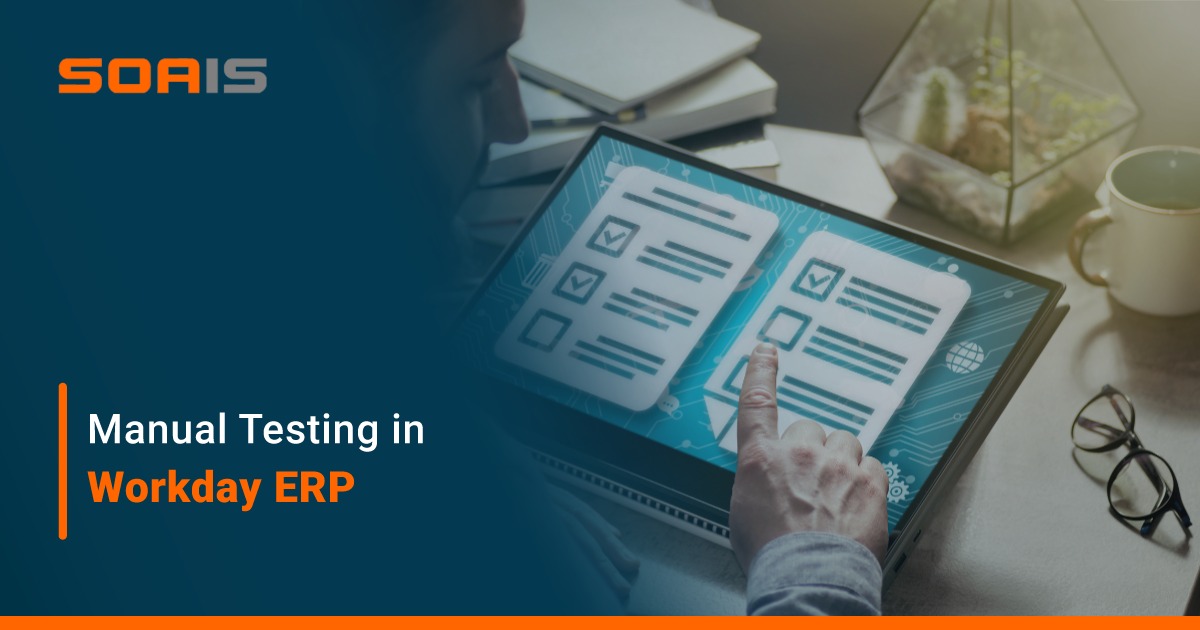
- May 16, 2024
- Narmada Kumar
- 0
Debunking Myths: Why Manual Testing Still Holds Its Ground in Workday ERP
In the ever-evolving landscape of enterprise resource planning (ERP), the debate between manual testing and automation testing continues to stir discussions. With the advent of sophisticated automation tools promising efficiency and accuracy, it’s easy to assume that manual testing is a relic of the past. However, when it comes to Workday ERP, manual testing remains a crucial component of ensuring system reliability and user satisfaction.
Workday ERP is renowned for its flexibility, scalability, and user-centric design. Its robust features cater to diverse business needs, from human capital management to financials and analytics. In such a complex and dynamic environment, manual testing offers several advantages over its automated counterpart.
First and foremost, manual testing allows for a deeper understanding of the system’s intricacies. Workday ERP is highly customizable, with configurations tailored to each organization’s unique requirements. Manual testers possess the domain expertise to navigate these configurations effectively, identifying potential issues that automated scripts may overlook. By exploring various scenarios manually, testers can uncover hidden bugs and anomalies that automated tests might miss.

Moreover, manual testing provides invaluable insights into user experience (UX) and usability. Workday ERP places a strong emphasis on user-centric design, aiming to enhance productivity and satisfaction.
Manual testers can simulate real-world usage scenarios, evaluating the system’s responsiveness, intuitiveness, and accessibility. This hands-on approach enables testers to empathize with end-users, identifying pain points and suggesting improvements to enhance overall usability.
Additionally, manual testing offers greater flexibility and adaptability in dynamic environments. Workday ERP is subject to frequent updates, with new features and enhancements introduced regularly. Automated tests often require extensive maintenance to accommodate these changes, leading to increased overhead and resource consumption. In contrast, manual testing allows for quick adjustments and on-the-fly testing, ensuring comprehensive coverage despite evolving system landscapes.

Furthermore, manual testing excels in exploratory testing, a crucial aspect of ensuring Workday ERP’s reliability. Exploratory testing involves spontaneous, ad-hoc testing to uncover unexpected issues and validate assumptions. This approach leverages human intuition and creativity, uncovering complex bugs that automated scripts may fail to detect. With Workday ERP serving as the backbone of critical business operations, the ability to perform thorough exploratory testing is indispensable in safeguarding data integrity and system stability.
Despite these advantages, it’s essential to acknowledge the role of automation testing in complementing manual efforts. Automation testing excels in repetitive, time-consuming tasks, such as regression testing and performance testing. By automating routine test cases, organizations can streamline their testing processes and allocate resources more efficiently. However, automation should be viewed as a supplement to manual testing, not a replacement.
In conclusion, while automation testing undoubtedly offers benefits in certain scenarios, manual testing remains indispensable in the realm of Workday ERP. Its ability to uncover nuanced issues, evaluate user experience, adapt to evolving environments, and perform exploratory testing sets manual testing apart as a critical component of ensuring system reliability and user satisfaction. By embracing a balanced approach that leverages the strengths of both manual and automation testing, organizations can achieve comprehensive test coverage and drive success in their Workday ERP implementations.

